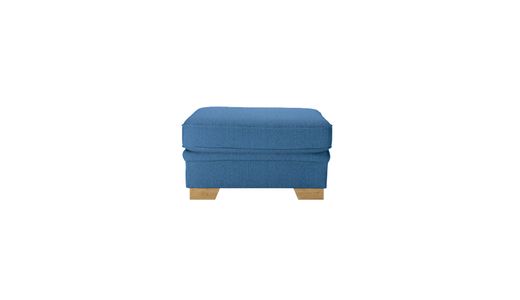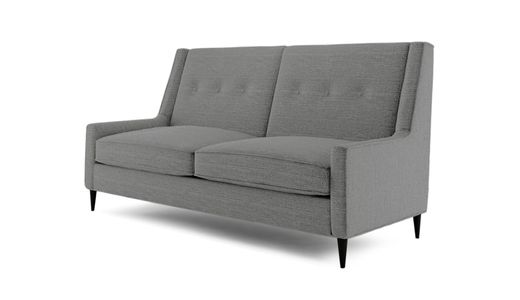
How do you combine different interior styles in one room?
Combining different interior styles in one room is an art that requires not only a good eye but also an understanding of how the different elements affect the whole. This approach makes it possible to create a unique and personal space that reflects the occupants' individuality, passions, and memories. An interior that combines different styles can be an inspiring place to live, where every detail tells its own story. However, in order for such an experiment not to fail, it is worth following certain rules that will help maintain harmony and consistency, avoiding chaos and randomness.
Choose a common theme
A common theme is nothing more than a guiding thread that binds together the various elements of an interior, giving it a unified character. This can be, for example, a color that appears in different shades and materials, or a pattern that runs through various textiles and decorations. If you choose a nature motif, for example, you can combine boho elements with modern accessories, and bind it all together with natural materials such as wood, linen or stone. Another approach may be to focus on a particular era or culture from which you draw inspiration - for example, combining minimalist forms of Scandinavian design with exotic ethnic accents. A common theme is like a foundation on which you build the entire arrangement - stable, but at the same time flexible, allowing for creativity.
Check out our proposal - the minimalist Covex Wood 2 Seater Sofa.
Balance the proportions
The key to a successful arrangement is not only to choose styles that blend well together but also to skillfully balance their proportions. Imagine an interior where every element screams, trying to draw attention to itself - such a space quickly becomes tiresome. To avoid this, you should decide which style will dominate, and which will only be an addition, a subtle emphasis on the character of the interior. For example, if you choose a minimalist style as a base, you can enrich it with expressive art deco accents - in the form of lamps, mirrors, or other decorations. These additions must be dosed in moderation so that they do not dominate the main idea of the arrangement. Only then will the interior remain consistent, but at the same time interesting and diverse.

Use accessories
Accessories are tools that allow you to change the interior design quickly and effectively, without making drastic modifications. Well-chosen accessories can completely change the character of a room, adding freshness and modernity or, on the contrary, introducing a touch of nostalgia and classics. The key is that these accessories should not be random, but should fit into the overall theme and style of the room. An example is the combination of modern furniture with retro accessories - an old gramophone, vintage posters or classic lamps will give the interior a unique atmosphere. However, remember not to overdo it - too many different accessories can make the space chaotic. Therefore, go for quality rather than quantity, and choose accessories that fit in with the rest of the arrangement.
Mix materials
Mixing different materials in one interior is a great way to create depth and complexity in a space. Each material brings something different - wood adds warmth and naturalness, metal brings modernity and rawness, glass brings lightness, and fabrics bring softness and coziness. When these different textures and materials are skillfully combined, the interior becomes more dynamic and interesting. For example, if you combine loft style with glamour elements, you can juxtapose raw brick walls with elegant velvet sofas, and complement metal bookcases with shiny brass accessories. However, it is important not to overdo it - too much variety of materials can overwhelm the interior and make it visually too heavy. That's why it's worth keeping moderation and remembering the "less is more" rule.
Maintain color consistency
The color scheme of an interior is one of the most important elements that affect its perception and atmosphere. Choosing the right color palette is crucial, especially when you want to combine different styles in one room. The colors should harmonize with each other, creating a cohesive whole that is not only aesthetically pleasing but also functional. For example, if you decide on neutral base colors, such as white, gray, or beige, you can add accents in intense colors - such as turquoise, green, or red, which will bring energy and dynamism to the interior. Colors can also relate to the styles you choose - warm shades of brown and gold will go well with a classic style, while cool, metallic colors will go well with a modern arrangement. Remember to avoid too many contrasts, which can introduce chaos - it's better to bet on a few well-matched colors that will complement each other.

Keep the balance between styles
The balance between styles is not only a matter of aesthetics but also the comfort of the space. When different styles are skillfully balanced, the interior becomes a pleasant place to stay in, which not only pleases the eye but also fulfills its functions. To achieve this, you should decide which style will dominate and which will play a complementary role. For example, if your heart is stolen by the classic style, but at the same time you do not want to give up modern touches, you can opt for classic furniture and architecture, complementing them with modern accessories - such as designer lamps, abstract paintings or innovative technological solutions. Such a mix will make the interior elegant and modern at the same time, and different styles will complement each other instead of competing.
Check out our proposal - Chesterfield Max Borneo three-seater sofa bed in classic style.
Add connecting elements
Connecting elements are a kind of "glue" that binds all the various elements of the interior, making them a coherent whole. These can be details that at first glance seem inconspicuous, but they are what give the interior its character and coherence. For example, these can be recurring motifs - such as geometric patterns, floral motifs, or a specific texture that appears on various elements of the interior. Furniture with simple, classic forms can be an excellent base for experimenting with different styles of accessories that bring dynamism and personal character to the space. Lighting, too, can act as a unifying element - appropriately selected lamps can emphasize different styles, and at the same time weld them into a harmonious whole.
Combining different interior styles in one room is the art of creating a harmonious and cohesive space that reflects personal preferences and lifestyle. The key is to choose a common theme, balance the proportions, use accessories skillfully, mix materials, maintain color consistency, balance styles, and add unifying elements. With these strategies, you can create a unique interior that blends different influences while remaining aesthetically pleasing and functional.









